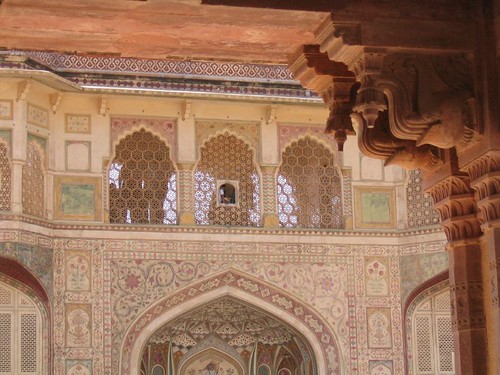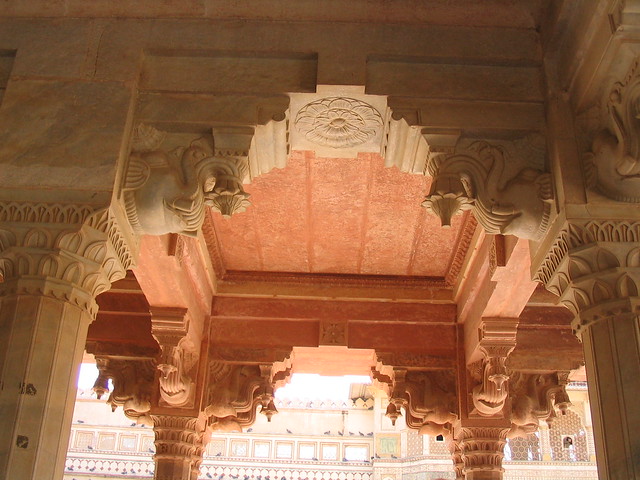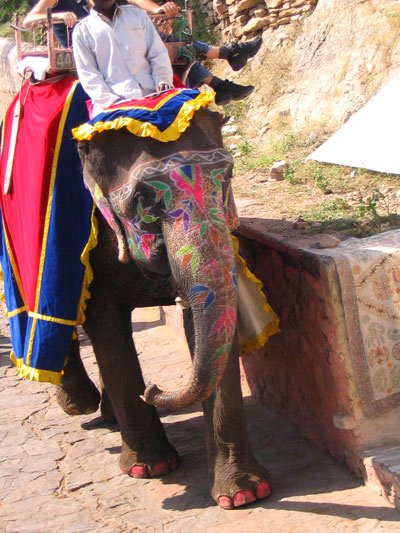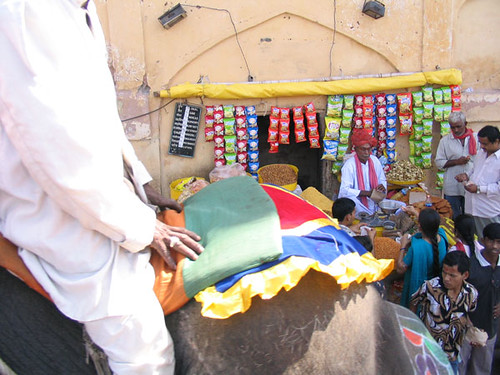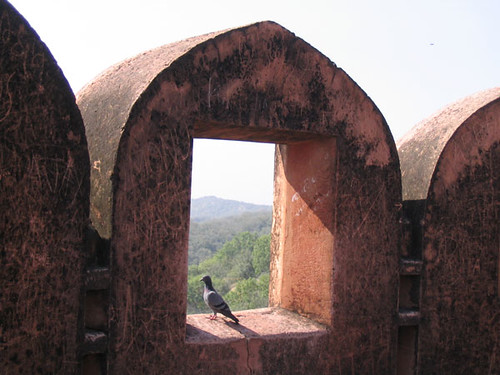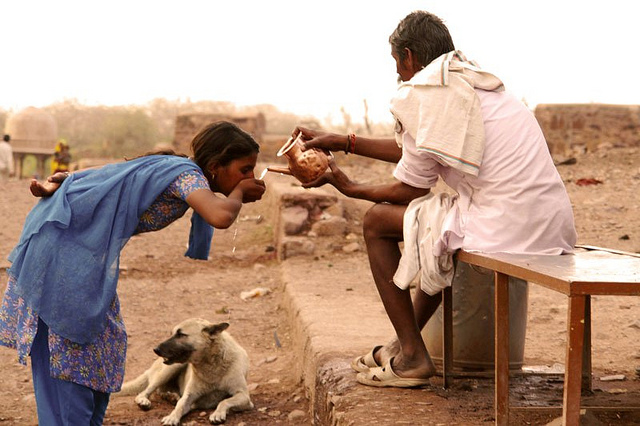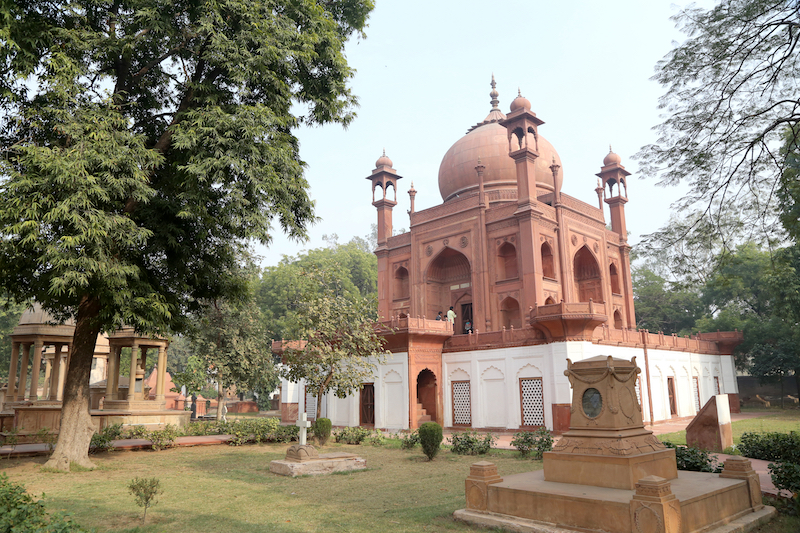The king wanted to sleep under the open skies. But perhaps it was too cold outside…? This is desert territory after all. So he had a candle lit inside the room. Maybe many candles. And he lay down on the royal bed. And looked up at the ceiling. At the open sky where thousands of stars were twinkling… On the mosaic of mirrors.
The guide has a smug look on his face as he flicks a match stick, the light bounces off his pearly white teeth and suddenly we see stars in the day too.
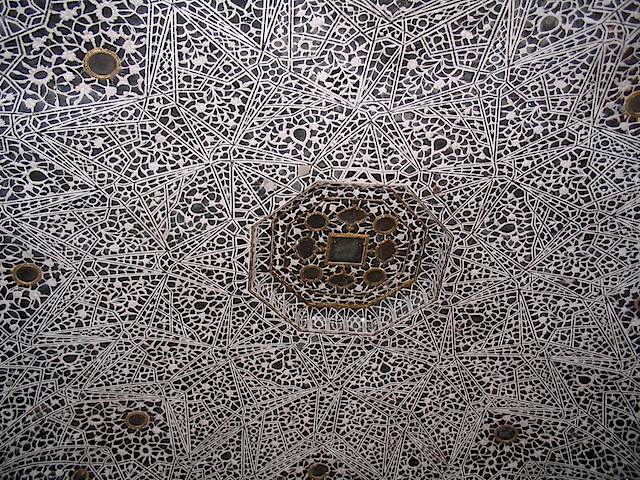
This was Sheesh Mahal or the palace of mirrors at Amber Fort Palace near Jaipur. Amber, also known as Amer, was once the capital of the Kachhwaha Rajputs who are said to have ruled over the region for over seven centuries. Amber palace has many interesting features inside – gardens and pavillions and smaller palaces and halls, but Sheesh Mahal is easily the most mesmerising… And entire palace with mirrors and glass pieces embedded on all the walls and ceilings.
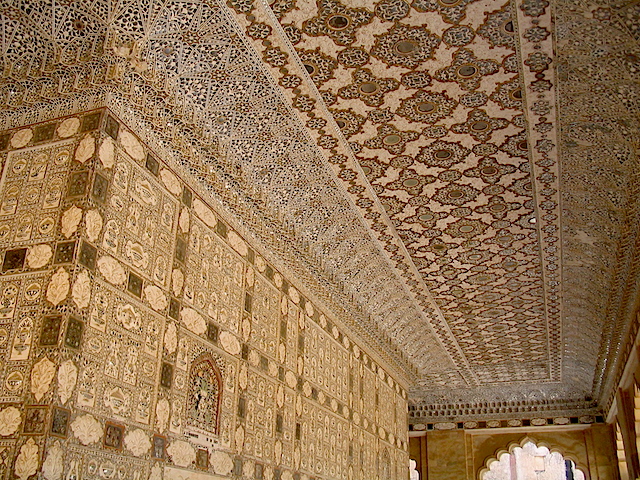
Brilliant stained glass windows. Enamel work. Striking colours. All of which have lasted over centuries… despite the best efforts of tourists and travelers who have chipped at them and broken pieces off them – to take back home as souvenirs perhaps?
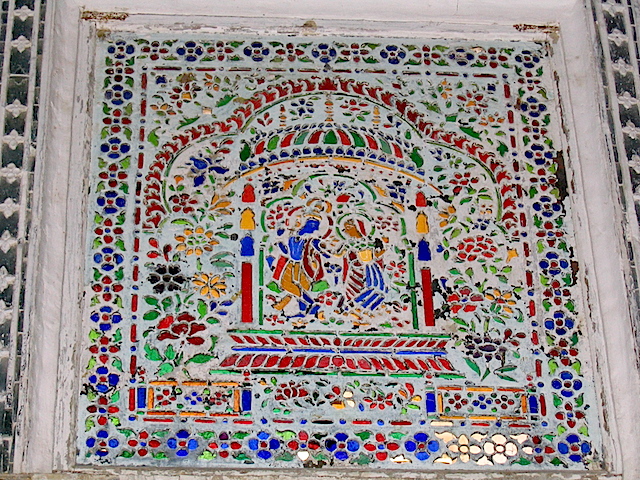
There are two prominent motifs all over the fort and palace – the main is that of the sun, signifying the belief that rulers of this dynasty were descendants of the sun. The main entry to the palace is through Suraj Pol, or the Sun gate which faces the east.
The lattice work seen in this picture is a typical feature of the artchitcture of those times – a veil in stone for the the women of the family, the zenana. The women stood behind the structure to watch the world outside; the world could not see them… The Diwan-e-am or the common hall for the subjects of the kingdom is to the left just before entering the palace. Here is the other common motif in evidence everywhere, the elephant. The hall is made entirely of pink stone, in keeping with other Jaipur architecture.
Interestingly, both the sun and elephant are believed to be symbols of royalty, even today in some places.
Apart from Jai Mandir or the hall of victory which houses the Sheesh Mahal, the fort palace also contains the royal apartments, the diwan-e-khas, the hall for the private privileged audience, the Kali Mandir or the special place of worship for the king, the zenana or the chambers of the women which are supposed to have been designed in such a way that the king had private and secret access to any of the chambers. The other wives had no inkling about who was the chosen wife of the night… And to keep them occupied at other times are remarkable and bright frescoes depicting scenes from Krishna Leela.
The fort palace is on top of a hill and can be reached throught a narrow cobblestone path. You can climb up the path or take a ride on a brightly painted elephant; some of the creatures wear hideous make up, bright pinks and yellows and oranges and blues together… And pink nail polish on the toes too…
We went up on elephant back – it was ceratinly the more adventurous option…You barely get used to swaying rocking motion of the elephant that you begin to notice other elephants passing you by from the other side on the narrow path, their swishing tails barely missing your face, and their mahouts adriotly avoiding collisions… You steady your hand and widly beating heart and suddenly the resident monkeys of the place jump at you from the trees… And on the ground, following you are vendors loudly selling kitschy postcards and souvenirs – and I thought to myself, “do the touristy thing and you get touristy treatment.”
Food stalls, fruit juices, souvenir vendors are dotted throughout the path…
If you are ever in Jaipur, be sure to visit Amber fort and palace, barely 11 km from Jaipur towards Delhi. Hire a guide there, or take a match box with you.
On the way to Amber fort palace, Jaigarh and Nahargarh forts, and Jal Mahal in the middle of the lake…
Jaigarh, or the fort of victory is atop a hill and was the defence post for the rulers. Based on rumours that they buried all their treasure inside the fort, Indira Gandhi at the time of emergency had excavations made all over. Without success. Jaigarh is also home to jaivan the victory cannon, which is supposed to be the largest moving cannon in the world. It is said that the cannon was never used in war; it is only worshipped on the day of Ayudha Puja. Nahargarh, the summer palace of the rulers… most of it in ruins but with spectacular views of Jaipur city in the distance.
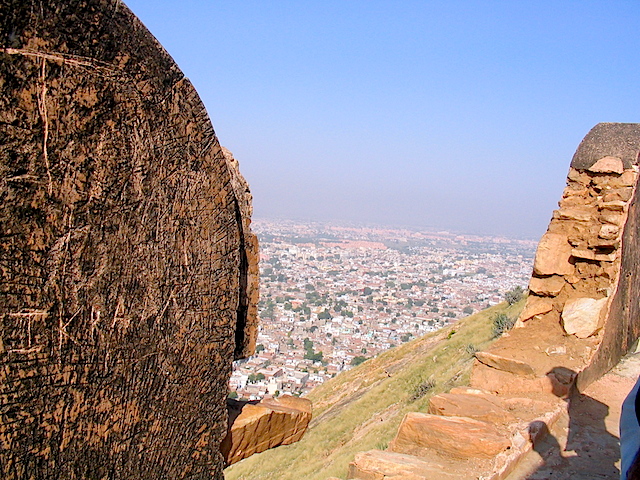
No monkeys here, but birds all the way through the route to these forts…
And perhaps some of the tourists there are looking for hidden treasure, even today…

